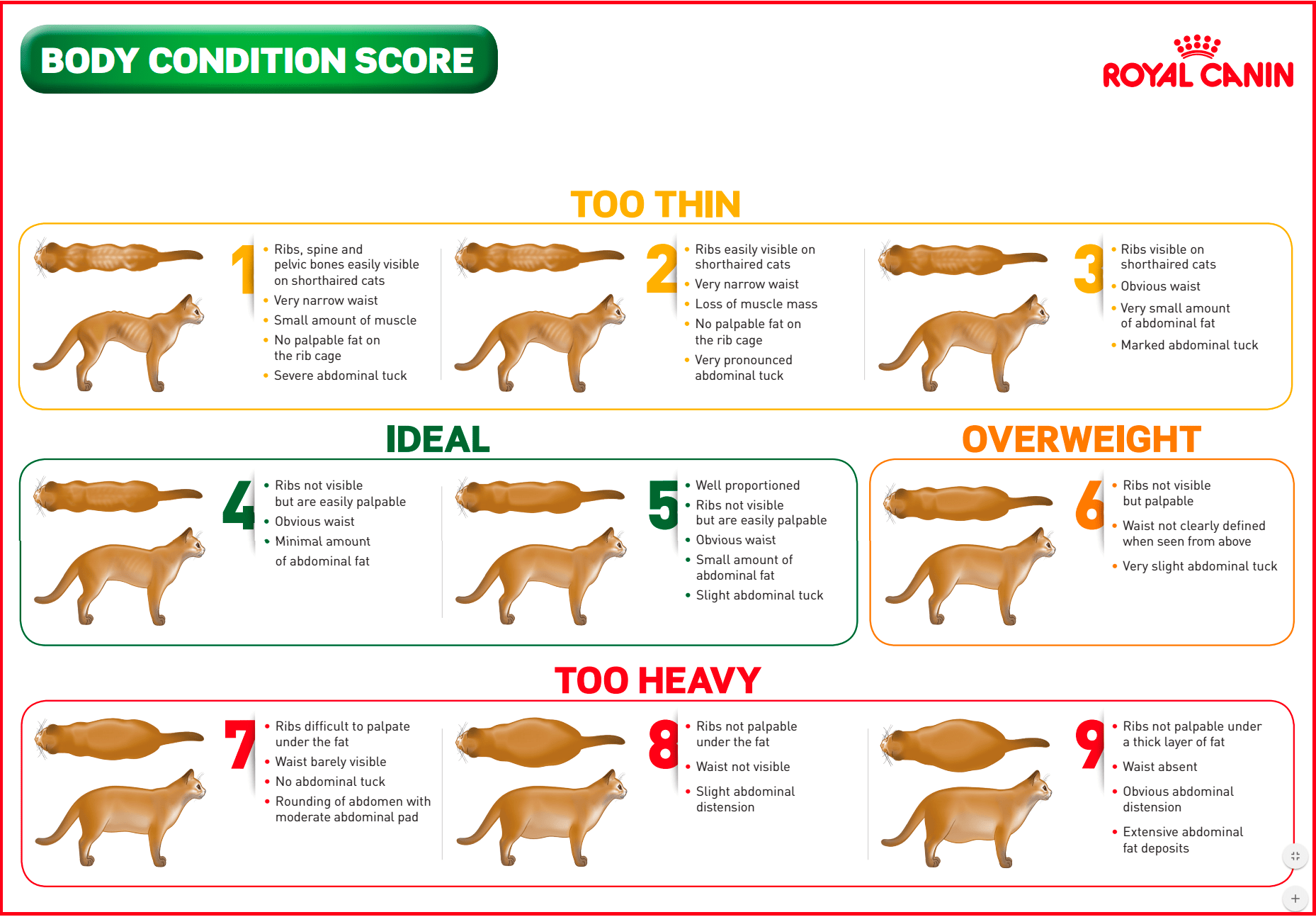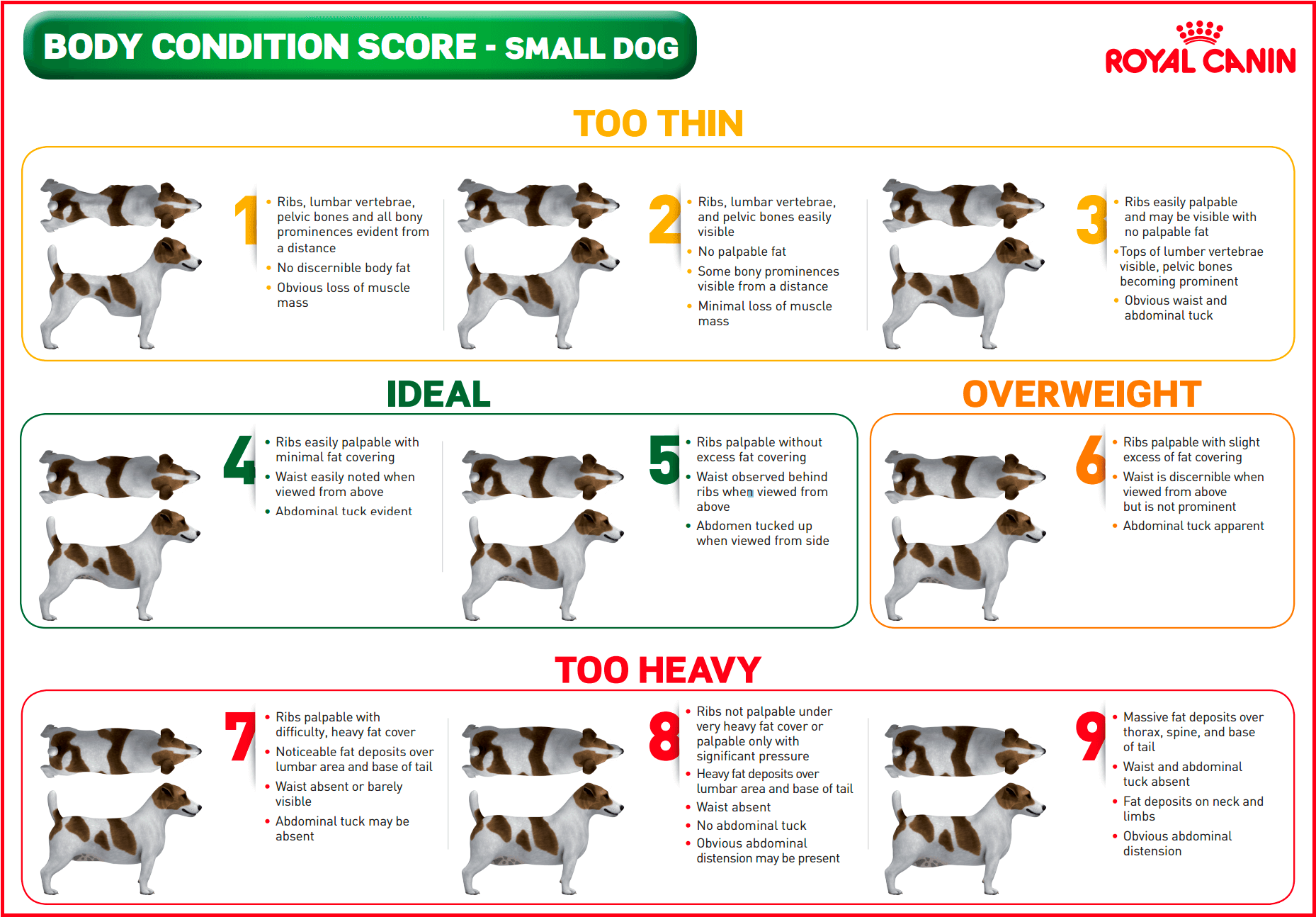Is my pet too fat
Unfortunately over 40% of the dogs and 30% of the cats in Australia are overweight; however, many owners fail to identify this situation. While there are different factors that might lead to obesity, overfeeding is considered the main cause for this problem. The lack of exercise and genetics also play an important role, as some breeds are more prone to obesity than others, such as Labrador, Cocker Spaniel and Bulldog.
On the other hand, an overweight pet is at risk of developing several other health issues like diabetes, arthritis or heart disease. Those concurrent conditions might shorten your pet’s lifespan, that’s why obesity should be addressed sooner rather than later.
WHAT IS OBESITY?
Obesity is an excessive accumulation of body fat. A pet is considered overweight when they are 10 – 20% over their desired weight (according to their breed and size). If they are >20% over their ideal weight they are considered obese instead. Both situations need to be addressed as soon as possible to avoid potential complications.
HOW DO I KNOW IF MY PET NEEDS TO LOSE WEIGHT?
If in doubt you should always ask your vet as they can tailor a weight management plan for your pet and guide you to achieve their desired goals. Nevertheless, there are some signs of obesity that you can easily detect at home
- You should be able to feel your pet’s ribs and spine under a thin layer of fat. If you can barely feel your pet’s ribs it probably means they’re overweight. The rib cage is the first area where dogs start accumulating fat.
- Your pet’s chest should be wider than their abdomen, with an evident waistline between the hips and the chest (like an hourglass) noted from above. In overweight pets you probably won’t see their waist.
- If you look at your pet from the side, you should be able to notice their abdomen tucks under the flank. If the abdomen instead hangs lower than the chest, likely your pet is overweight. This is the first area where cats start accumulating fat.
- Similar to the ribs, the bones located at the top of the tail base should be easily palpable under a thin layer of fat. This will be difficult to feel in obese pets.
To assess a pet’s body condition, most veterinarians use a body condition scoring system on a scale of either 1-5 (where 3 is ideal) or 1-9 (where 5 is ideal).


Images from royalcanin.co.uk
WHAT CAN I DO IF MY PET IS OVERWEIGHT?
Overfeeding is the main cause of obesity in pets, it is for this reason that controlling what our pets are eating becomes crucial in a weight loss management plan.
- Weight management diet → if your pet is overweight, it’s not recommended to only reduce the current amount of food you are feeding them. This situation might lead to malnourishment in the long term, as we would not only be cutting the calories by decreasing food intake, we would also be decreasing part of the nutrients provided. There are a few veterinary diets in the market specially formulated for weight loss in pets (Hills® Prescription Diet® Metabolic and Royal Canin® Satiety). They will provide complete nutrition in a low calorie density meal while maintaining an appropriate nutritional balance.
- Portion control according to their requirements and weight goals. If you are unsure about the portion of food your pet needs to eat daily, don’t hesitate to check with your vet.
- Schedule feeding times rather than allowing them grazing throughout the day. This will make it easier to control the amount of food they’re eating.
- Treats shouldn’t represent more than 10% of the total calorie intake daily. If you are feeding your pet some treats during the day, subtract this amount from their daily food intake
- Make sure everyone at home is on board with the plan, in this way we can avoid extra treats during the day or a pet having two dinners on one day.
- Monthly regular vet checks to keep track of their progress and re adjust the plan if needed. Also, your veterinarian will guide you how to continue feeding your pet once the target body weight has been achieved to prevent regaining the weight loss.
- Physical Exercise → while the main focus for weight loss is in the diet, physical exercise also plays an important role in weight management. Regular walks, organising daily play sessions with your pets and enrichment toys/ activities at home to keep them active, are just a few of the ways we can encourage physical activity.
Just like with people, every pet will lose weight at a different pace as there are many factors that might be influencing your pet’s weight gain. Working along with your vet during this weightloss journey will ensure a successful outcome and a better quality of life for your pet in the long term. If you would like to start the weight loss journey with your pet, please don’t hesitate to contact us!


